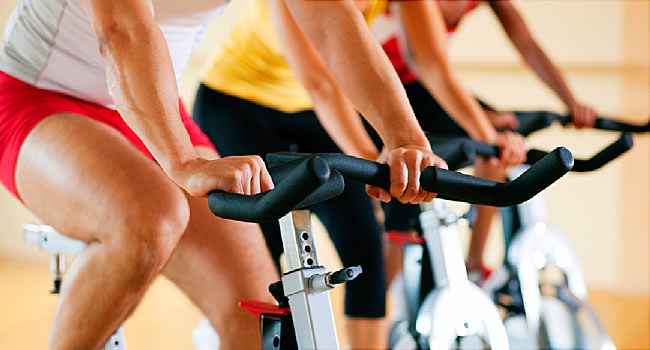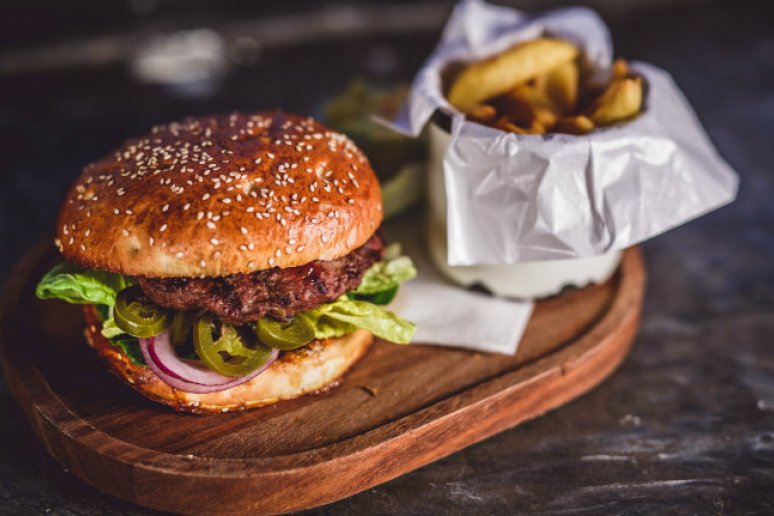Women’s health (physical and mental) is closely related (and somewhat “mimics”) hormonal status and “balance” in the body.
Hormonal status here refers to the interplay between female sex hormones (oestrogen and progesterone), stress hormones (specifically cortisol), and thyroid hormones (TSH, T4, T3). Sex hormone production and balance is particularly sensitive to levels of stress hormones.
Stress has a profound effect on oestrogen/progesterone balance, as well as creating unnecessary inflammation in the body.
A hormonal cycle in perfect balance helps a woman to feel confident, empowered, healthy and happy. A woman who feels “out of sorts”, is depressed for no apparent reason, or shows other common signs and symptoms of hormonal imbalance (of which there are many), is either under too much stress, not taking enough exercise, and or, is eating a poor diet. She herself is out of balance!
Eating poorly results in the body not getting sufficient nutrients necessary to produce enough of the correct hormones in the correct balance.
Nutrients often lacking include essential fatty acids (especially GLA, EPA and DHA), B vitamins (especially B6), calcium and magnesium.
A “healthy diet for a healthy woman” should be “designed” to encourage normal healthy production, balance, detoxification and excretion of oestrogen and other hormones. The organs involved are the ovaries and adrenals (for production), the liver (for detoxification), and the kidneys and bowel (for excretion via faeces and urine). Naturally, these organs need to be in good working order, and nourished correctly!
The diet should contain a vast array of antioxidants and anti-inflammatory agents to dampen any internal inflammation. It should aim to lower insulin levels (minimising fat storage), and improve insulin sensitivity, i.e. the way in which the body handles sugars. This helps to burn fat, as well as minimising excess fat being converted to oestrogen.
(N.B. Fat cells can convert fat to a “bad” oestrogen via a biochemical process called aromatisation).
Soya protein seems to encourage fat loss in the body together with an improvement in the amount of lean muscle tissue. Soya (especially soy concentrates) contains high levels of beneficial plant oestrogens… known as isoflavones. Isoflavones help to re-balance levels of good and bad oestrogens, and promote a healthier oestrogen/progesterone balance. Non-soya food sources of isoflavones include fennel, flaxseeds (ground or milled otherwise they are largely indigestible), fenugreek, cumin and other spices, blueberries, and the herbs red clover, black cohosh and kudzu. Ground flaxseeds incidentally are a great “soluble” fibre source that promotes the excretion of oestrogen via faeces, and also minimises oestrogens being re-absorbed back into the body.
Green tea “catechins” also contribute to healthy oestrogen detoxification and excretion.
A diet that is rich in cruciferous vegetables and wholegrains supports healthy liver function…. specifically in the healthy detoxification of oestrogen and other hormones through the liver.
Diet
The diet should be as clean as possible. This means eating food that contains NO unnecessary additives, preservatives, hormones or hormone-mimicking chemicals, sugars, or trans fats/hydrogenated fats. Eating only natural, unprocessed foods (in itself) will ensure that all these biochemically and hormonally disruptive substances are kept to an absolute minimum.
Highly beneficial foods…
Nutritional science has come a long way, and we now know that the following foods are highly beneficial for proper hormone production and healthy oestrogen metabolism.
Soya foods and soy concentrates – tofu, miso, Tamari, tempeh, soya beans, soya milk and plain soya yogurt
Chickpeas and beans in general – mung beans are easy to soak and cook in 45 mins, or sprouted
Whole and ground Indian spices and herbs – fenugreek seeds (wonderful when sprouted), cumin, cinnamon, turmeric etc
Unpolluted oily fish (and other quality fish) and fish oil – choose high-grade unpolluted fish oil capsules
WHOLE grains – brown rice, wheat berries and rye berries (these are the whole wheat and rye grains that when soaked and cooked have a lovely chewy texture), barley, millet, whole oats
Cruciferous vegetables – broccoli, cauliflower, cabbage, and Brussels sprouts
Ground/milled flaxseeds – 2 tablespoons per day
Sunflower and pumpkin seeds -preferably ground
Almonds and walnuts – preferably ground
Berry fruits (especially blueberries, raspberries, blackberries etc.), a little melon and citrus fruits such as lemons. Warm/hot water with the juice of a fresh lemon is the best way to start the day.
Highly beneficial drinks…
Organic Green tea – steep for 5-10 minutes
Miso soup – you can buy sachets or just add hot water to a tsp of miso paste
Soya shakes – blend soya milk, yogurt, berries and ground seeds
Filtered water with a little lime or lemon juice – remember that urine colour is an excellent indication of hydration status. It should be pale yellow/straw colour the majority of the time… so drink enough water and other fluid to achieve this. Drinking sufficient water is vital for normal kidney function and excretion of oestrogen via urine.
Meal ideas…
The majority of the meals and foods I have chosen contain slow-releasing carbohydrates. Slow-releasing carbohydrates (often call “complex” or low-glycaemic foods) are digested and broken down in the gut relatively slowly, releasing their sugars steadily into the bloodstream. This results in a steady rise in blood sugar, sustained energy, as well as efficient fat breakdown and hormone control. Eating complex carbohydrates help increase and control energy levels; aids weight loss, and controls and encourage a natural appetite.
N.B. Re: Women’s health and hormone balance…
Eating natural whole foods keeps insulin levels low – high insulin increases testosterone and oestrogen production leading to potential oestrogen and/or testosterone dominance in relation to progesterone
Breakfast
* Berries with yogurt and cinnamon – Combine ½ a punnet of blueberries and ½ a punnet of raspberries with 100g of goat’s yogurt. Mix in 2 tablespoons of ground flaxseeds and sprinkle on top ½ tsp of ground cinnamon.
* A small bowl of oat porridge or cooked oatmeal made with soya or almond milk (Ecomil/Evernat). Add grated apple, a handful of whole almonds, or sunflower seeds and 2 or 3 tablespoons of natural “bio” yogurt.
* Fruit bowl with yogurt and flaxseed – chop 2 pieces of fruit, top with plain soya yogurt and stir in 2 tablespoons of ground or ready-milled linseeds (flaxseeds), with a soya milk or almond milk and hot water. Add ¼ tsp of cinnamon too.
* Smoothies in a glass – A blend of raspberries and strawberries, yogurt, soya milk or almond milk, and 2 tablespoons of milled/ground flaxseeds (available from some Sainsbury’s stores or health food shops), or wheatgerm. This meal provides essential fats, protein and fibre and flaxseeds (or other seeds) add a nutty taste to the mixture. A great start to the day!
Lunch
Chickpea dahl with dark green leafy and baby vegetable salad – gently fry off ½ tsp each of fenugreek seeds, coriander seeds and ground cumin. Add ½ can of chickpeas and 100g of cherry tomatoes. Cook gently for 10-15 mins. Make a salad of green leaves, chopped coriander, and add mange tout peas, sliced beetroot, cucumber, and sliced raw fennel. Drizzle with a little olive oil, balsamic or cider vinegar, and a little lemon juice. Serve with a slice of rye bread.
Dinner
Tofu and cruciferous veg stir-fry. Use a variety of cruciferous vegetables – broccoli, cauliflower, cabbage, and stir-fry with onion, garlic and ginger. Use Tamari or a spoon of miso (try brown rice miso) mixed in a little water as a base or marinade. Stir in 100-150g of cubed tofu, tossing the mix until the vegetables are “al dente”… cooked but with a slight crunch!
Snacks if you need them…
A small handful of whole almonds
Hummus and vegetable crudités
A small bowl of sliced melon, blueberries and raspberries
Do supplements help?
Coupled with a good hormone-friendly diet, supplements can further naturally balance and control hormone levels.
The following are examples of beneficial supplements for hormonal balance…
Fish Oil (containing EPA and DHA) – vital for production of healthy prostaglandins and anti-inflammatory substances in the body.
B Vitamins, taken as a “complex” – B vitamins together with EPA and DHA are paramount for healthy oestrogen/progesterone balance, AND liver function.
Antioxidants such as green tea extract, d-limonene, turmeric or other quality antioxidants to support healthy cellular ageing.
Other oestrogen-supporting agents – isoflavones, non-soy isoflavones, phytonutrients, active folates (supporting methylation), support female health at all stages as well as benefiting breast health, bone health and cardiovascular health.
Calcium together with other essential nutrients to support bone health – calcium must be in an absorbable form, and taken with other nutrients, such as magnesium, vitamin D and boron. Microcrystalline “hydroxyapatite” (MCHC) is the ultimate form of calcium for proper absorption into bone, and studies show this to be effective in improving bone density in postmenopausal women.
N.B. Always seek advice from a registered Nutritionist before embarking on a specific supplement programme.
Balancing herbs can be very helpful for many women in dealing with stress or sex hormone imbalance (particularly during the pre-menstrual phase and during and after menopause). Examples include chaste berry (agnus castus), dong quai, black cohosh, red clover, ginger, evening primrose, peony root, red raspberry leaf, and St. John’s Wort.
Many can be taken in isolation, or in combination with each other.
Always get professional advise before taking herbs, especially if you are on ANY medication, or hormonal treatment.
Exercise
Yoga and Pilates are two of the best forms of exercise for women to do regularly.
Stress management – meditation, deep breathing, cognitive behavioural therapy, transactional analysis (TA), are all useful and effective therapies and practises that can benefit women in a thousand ways!




